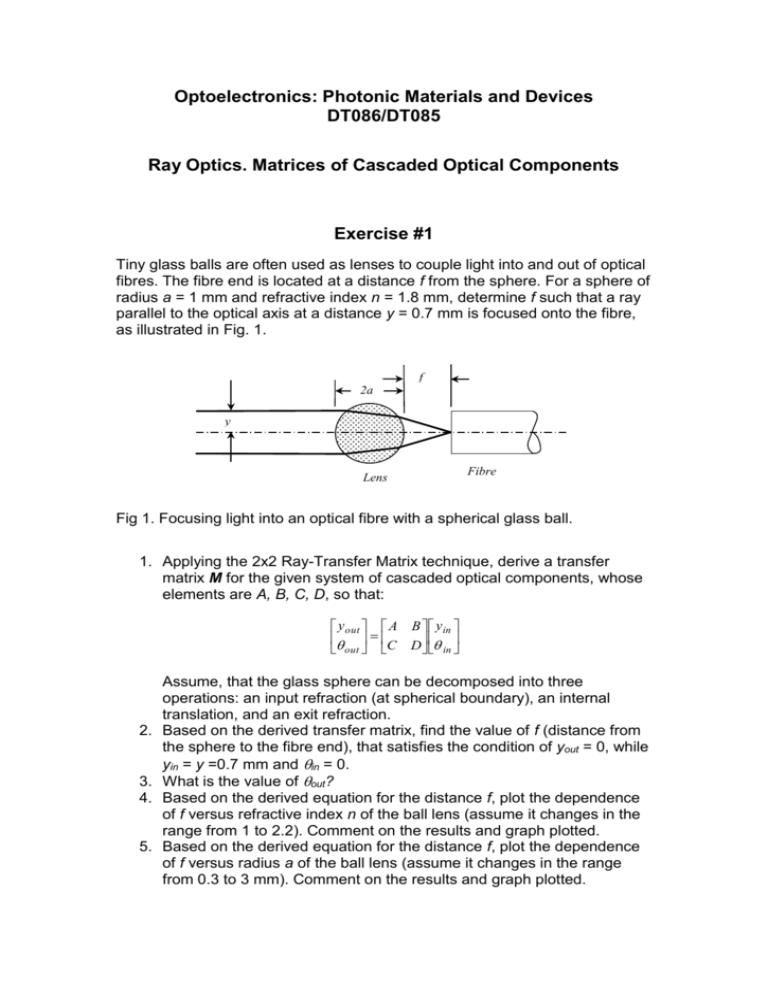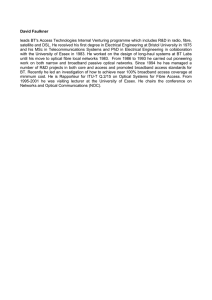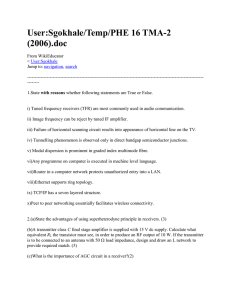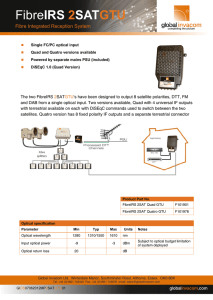Ray Optics. Matrices of Cascaded Optical Components
advertisement

Optoelectronics: Photonic Materials and Devices DT086/DT085 Ray Optics. Matrices of Cascaded Optical Components Exercise #1 Tiny glass balls are often used as lenses to couple light into and out of optical fibres. The fibre end is located at a distance f from the sphere. For a sphere of radius a = 1 mm and refractive index n = 1.8 mm, determine f such that a ray parallel to the optical axis at a distance y = 0.7 mm is focused onto the fibre, as illustrated in Fig. 1. f 2a y Lens Fibre Fig 1. Focusing light into an optical fibre with a spherical glass ball. 1. Applying the 2x2 Ray-Transfer Matrix technique, derive a transfer matrix M for the given system of cascaded optical components, whose elements are A, B, C, D, so that: y out A B yin out C D in 2. 3. 4. 5. Assume, that the glass sphere can be decomposed into three operations: an input refraction (at spherical boundary), an internal translation, and an exit refraction. Based on the derived transfer matrix, find the value of f (distance from the sphere to the fibre end), that satisfies the condition of yout = 0, while yin = y =0.7 mm and in = 0. What is the value of out? Based on the derived equation for the distance f, plot the dependence of f versus refractive index n of the ball lens (assume it changes in the range from 1 to 2.2). Comment on the results and graph plotted. Based on the derived equation for the distance f, plot the dependence of f versus radius a of the ball lens (assume it changes in the range from 0.3 to 3 mm). Comment on the results and graph plotted.











